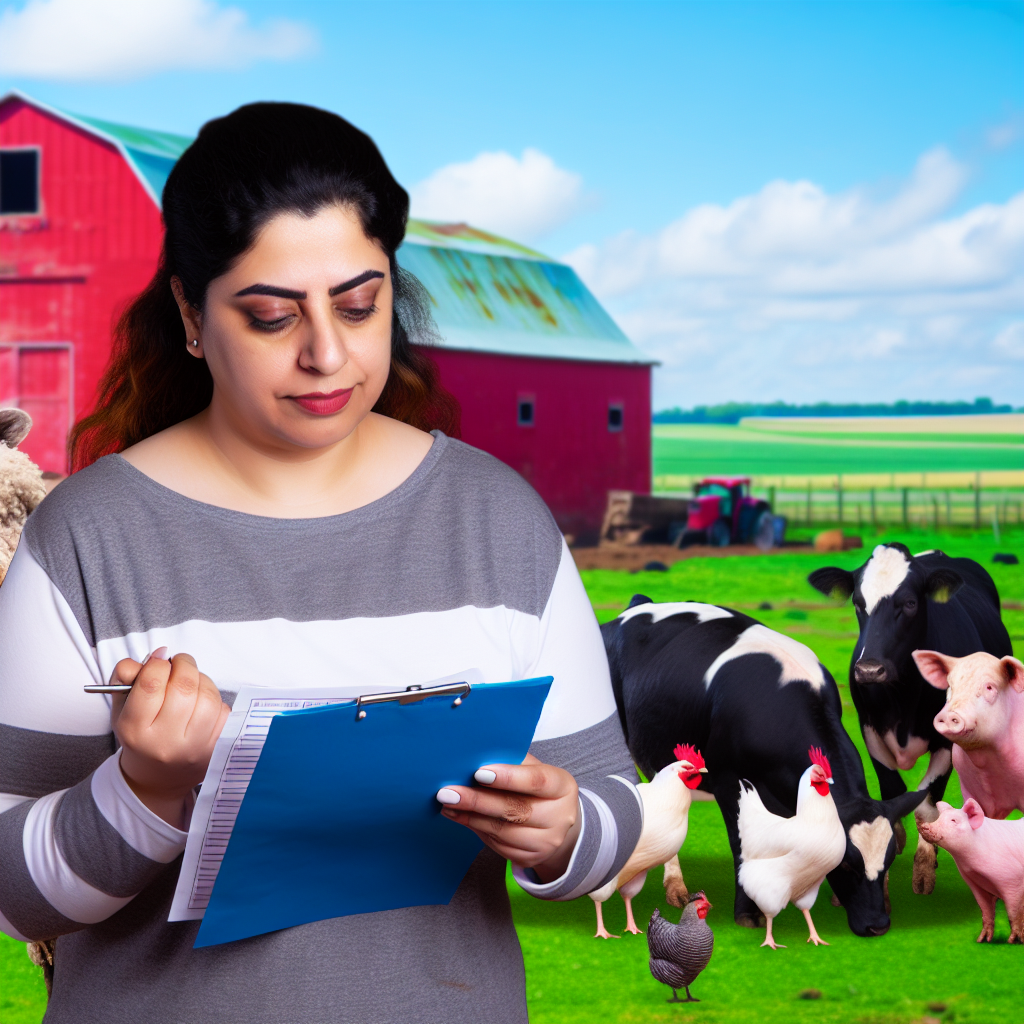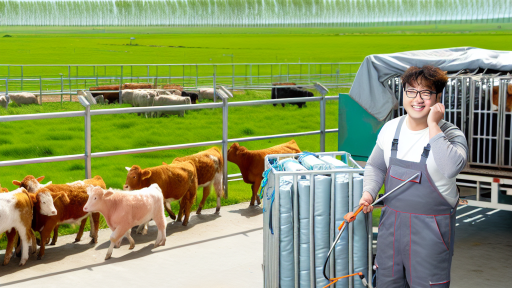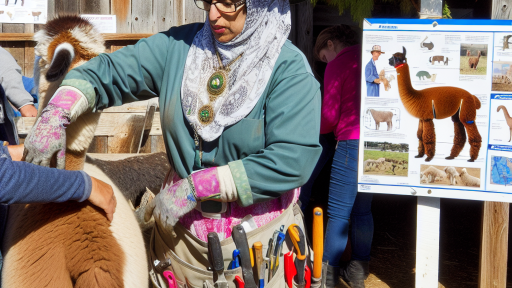Understanding Your Farm’s Goals and Needs
Defining Your Farm’s Objectives
Clearly define what you want to achieve with your farm.
Your objectives might include producing crops, raising livestock, or both.
Consider your target market and the products that sell well in your area.
This clarity will guide your decisions on which breeds to select.
Assessing Available Resources
Evaluate the resources on your farm carefully.
Consider the land size, soil quality, and water supply.
Your available resources will influence the breeds you can effectively manage.
Additionally, assess your financial resources for purchasing and maintaining livestock.
Understanding Local Climate
Research the climate conditions prevalent in your area.
Some breeds thrive in specific climates, while others do not.
Choose breeds that are adaptable to your local weather conditions.
This will help ensure their health and productivity.
Identifying Maintenance Capabilities
Reflect on your capacity to manage and care for different breeds.
Consider your available time and labor resources.
Some breeds may require more intensive care than others.
Transform Your Agribusiness
Unlock your farm's potential with expert advice tailored to your needs. Get actionable steps that drive real results.
Get StartedIdentifying your maintenance capabilities helps prevent overwhelm.
Setting Production Goals
Determine your production requirements based on market demand.
This may include meat, milk, or fiber from your livestock.
Different breeds offer varying levels of productivity.
Select breeds that align with your production goals efficiently.
Considering Breeds for Resilience
Focus on breeds known for their resilience and adaptability.
These breeds can withstand fluctuations in climate and market pressures.
Investing in resilient breeds can lead to long-term success.
Always consider health and disease resistance in your selections.
Assessing the Local Climate and Environment
Understanding Climate Zones
Climate zones dramatically affect farm operations.
Each zone offers unique challenges and benefits.
Knowing your local climate helps in selecting suitable breeds.
Consider temperatures, precipitation, and seasonal changes.
Evaluating Soil Quality
Soil health is critical for any farming endeavor.
Test your soil for nutrient levels and pH balance.
Healthy soil promotes robust plant and animal growth.
Enhancing soil quality can lead to better yields.
Moreover, specific breeds thrive in certain soil types.
Considering Local Pests and Diseases
Local pests and diseases challenge many farms.
Research common threats in your area.
Some breeds resist specific diseases better than others.
Choosing resilient breeds reduces crop losses.
Furthermore, healthy animals contribute to a thriving farm.
Assessing Available Water Resources
Water availability is crucial for farming success.
Showcase Your Farming Business
Publish your professional farming services profile on our blog for a one-time fee of $200 and reach a dedicated audience of farmers and agribusiness owners.
Publish Your ProfileEvaluate your access to irrigation and rainfall patterns.
Consider breeds that require less water if resources are limited.
Some livestock are more drought-resistant than others.
Adapting to Future Climate Changes
Climate change increasingly impacts agriculture.
Look for breeds with adaptability to changing conditions.
Sustainable practices enhance resilience against extreme weather.
Investing in diverse breeds may cushion against future shocks.
Evaluating the Purpose of Animal Breeding
Understanding Breeding Goals
Animal breeding serves diverse purposes on a farm.
Most commonly, farmers breed animals for meat production.
Others focus on milk and dairy product production.
Some farms prioritize egg-laying capabilities.
Additionally, draft animals are essential for heavy work.
Meat Production Breeds
Choosing breeds for meat involves specific attributes.
Cattle breeds like Angus offer high-quality beef.
Pork production benefits from breeds like Yorkshire.
Chicken breeds such as Broilers grow rapidly for meat.
Considering local market demands guides breed selection.
Milk Production Breeds
For milk production, specific dairy breeds excel.
Holsteins are renowned for high milk yield.
Jerseys provide rich, creamy milk with higher butterfat.
Farmers should research breed characteristics thoroughly.
It is vital to consider milk composition needs.
Egg Production Breeds
Egg-laying breeds vary significantly in output.
Leghorns are celebrated for prolific egg production.
Rhode Island Reds also provide consistent laying.
Many farmers choose breeds based on climate adaptability.
Understanding the needs of your market influences choice.
Draft Breeds for Work
Draft animals perform essential work on farms.
Breeds like Clydesdales are effective for heavy pulling tasks.
Percherons offer strength while remaining agile.
Farmers should consider land size and workload requirements.
Ensure adequate training and care for draft animals.
Learn More: Optimizing Breeding Cycles for Maximum Efficiency
Researching Breed Characteristics and Behaviors
Understanding Breed Types
Selecting the right breed starts with understanding breed types.
Different types serve unique purposes on a farm.
For example, some breeds excel in milk production.
Others are better suited for meat or wool production.
Moreover, certain breeds are more resilient to local conditions.
Evaluating Temperament
Temperament plays a crucial role in breed selection.
Some breeds are more docile and easier to handle.
Showcase Your Farming Business
Publish your professional farming services profile on our blog for a one-time fee of $200 and reach a dedicated audience of farmers and agribusiness owners.
Publish Your ProfileIn contrast, others may be aggressive or skittish.
Assessing the temperament can help in daily management.
Thus, choose breeds that align with your farming style.
Considering Adaptability
Adaptability affects how well a breed thrives in your environment.
Some breeds may struggle in extreme weather conditions.
Research breeds that are known for their hardiness.
For instance, certain goats tolerate high heat effectively.
Consequently, prioritize adaptability when selecting breeds.
Researching Local Resources
Utilize local resources for breed research.
Local agricultural extensions provide valuable information.
Talking to experienced farmers enhances understanding of breeds.
Additionally, attending farming workshops is beneficial.
Networking with fellow farmers often leads to useful insights.
Importance of Genetic Considerations
Take genetic factors into account when selecting breeds.
Genetic traits influence productivity and health outcomes.
Seek breeds with proven genetics suited for your goals.
Use genetic testing to assess potential breeding stock.
This minimizes risks and maximizes farm performance.
Delve into the Subject: Optimizing Water Quality in Fish Farming Environments
Considering Genetic Diversity and Health Issues
The Importance of Genetic Diversity
Genetic diversity enhances the resilience of farm animals and plants.
This diversity helps prevent the spread of diseases among livestock.
Moreover, diverse breeds can adapt better to changing environmental conditions.
Farmers should consider genetic variety when selecting breeds.
Identifying Health Issues
Health issues can significantly affect productivity and profitability.
It’s crucial to research common health problems associated with specific breeds.
Consulting veterinarians can provide insights into breed-specific health concerns.
Regular health screenings contribute to early detection of potential issues.
Selecting Healthy Breeds
Opt for breeds known for their hardiness and low incidence of disease.
Consider sourcing animals from reputable breeders committed to health testing.
Look for breeds with good records of vaccination and parasite control.
Additionally, prioritize breeds that have been selectively bred for better health.
The Role of Environment in Health
Environmental factors play a critical role in animal health.
Ensure that the living conditions are suitable for the selected breeds.
Maintain hygiene to prevent the spread of diseases within the farm.
Additionally, provide adequate nutrition and exercise to promote overall health.
Learn More: Ensuring Animal Welfare During Transportation

Analyzing Market Demand and Economic Factors
Understanding Market Trends
Market trends directly influence breed selection for your farm.
Research current consumer preferences and demands.
Focus on local, regional, and national trends.
Next, analyze historical data for reliable patterns.
Showcase Your Farming Business
Publish your professional farming services profile on our blog for a one-time fee of $200 and reach a dedicated audience of farmers and agribusiness owners.
Publish Your ProfileThis information helps identify profitable opportunities.
Assessing Economic Factors
Economic conditions significantly impact farming decisions.
Consider input costs, including feed and healthcare.
Evaluate labor availability and its associated costs.
To maximize profits, assess potential pricing strategies.
Look for breeds with lower maintenance costs.
Identifying Target Markets
Define your target market clearly to meet demands.
Consider niche markets that may benefit your farm.
Diverse markets may require different breeds and practices.
Engage with local communities to understand preferences.
Surveys and focus groups can provide valuable insights.
Evaluating Regulatory Factors
Government regulations significantly affect breed selection.
Stay informed about local and federal agricultural laws.
Compliance can impact farming practices and costs.
Understand health and safety regulations for livestock.
Research any subsidies or programs that support specific breeds.
Making Data-Driven Decisions
Utilize collected data to inform your breed selection.
Analyze both quantitative and qualitative information.
Data analytics can enhance profitability and sustainability.
Systematic decision-making reduces risks associated with farming.
Moreover, staying adaptable to market changes is crucial.
You Might Also Like: Insulation Techniques For Livestock Facilities
Consulting with Local Farmers and Agricultural Experts
Building Relationships with Local Farmers
Connecting with local farmers helps you gain practical knowledge.
They share experiences and insights from their own farming practices.
Building these relationships can foster mutual support and collaboration.
Engaging Agricultural Experts
Consult agricultural experts for professional guidance.
They can provide research-based recommendations tailored to your needs.
Experts also keep you informed about the latest industry trends.
Utilizing Local Agricultural Extension Services
Local agricultural extension services offer valuable resources.
These services provide classes, workshops, and specialized advice.
Additionally, they connect you with other local farmers.
Participating in Community Farming Conferences
Attend community farming conferences for networking opportunities.
These events often feature experienced speakers and workshops.
Participating helps you stay current with best practices.
Creating a Supportive Farming Network
Forming a network ensures you have access to shared knowledge.
Other farmers can offer support and advice during tough times.
Collaboration within this network can lead to innovation.
Creating a Breeding Plan with Long-term Sustainability in Mind
Defining Your Farm’s Goals
Start by clearly identifying your farm’s objectives.
Consider what you want to achieve in terms of production.
Additionally, think about the types of animals that align with your goals.
Showcase Your Farming Business
Publish your professional farming services profile on our blog for a one-time fee of $200 and reach a dedicated audience of farmers and agribusiness owners.
Publish Your ProfileAssessing Local Environmental Conditions
Evaluate the climate in your region.
Different breeds thrive in specific environments.
Moreover, check the availability of resources like water and forage.
Researching Suitable Breeds
Investigate various breeds that meet your needs.
Focus on those known for hardiness and adaptability.
Consult local agricultural extension programs for guidance.
Implementing Genetic Diversity
Maintain genetic diversity within your breeding stock.
This helps prevent diseases and promotes resilience.
Utilize breeding techniques that enhance diversity effectively.
Creating a Breeding Schedule
Develop a detailed breeding timeline for your farm.
Include considerations for seasonal changes and market trends.
Regularly review and adjust the schedule as needed.
Monitoring Breeding Outcomes
Continuously assess the performance of your livestock.
Keep records of breeding successes and challenges.
Utilize this data to refine your breeding strategies.
Incorporating Feedback and Adaptation
Seek feedback from fellow farmers and agricultural experts.
This can guide the refinement of your breeding plan.
Stay open to adapting practices based on new information.
Additional Resources
Global Hemp Innovation Center | College of Agricultural Sciences




